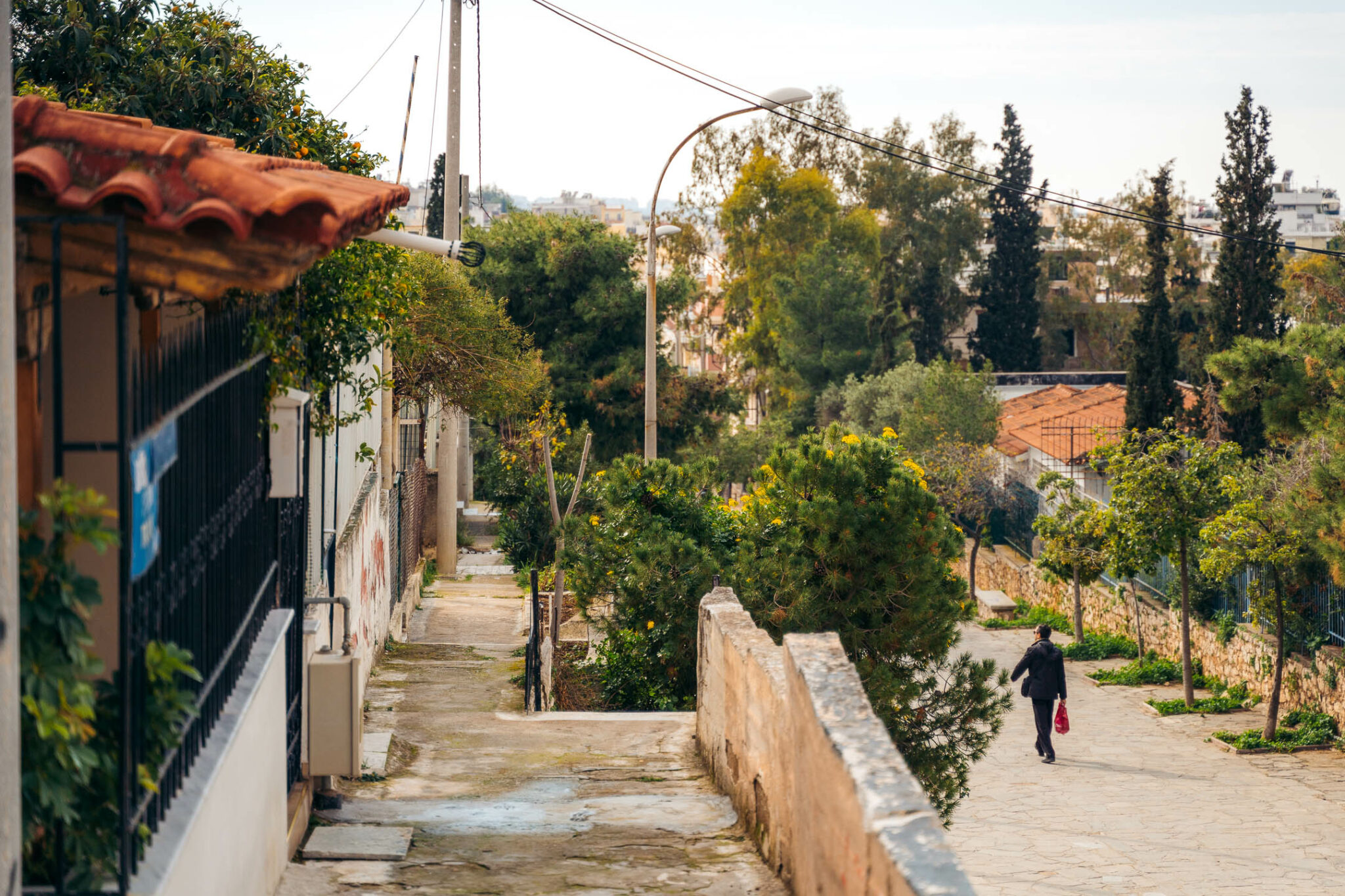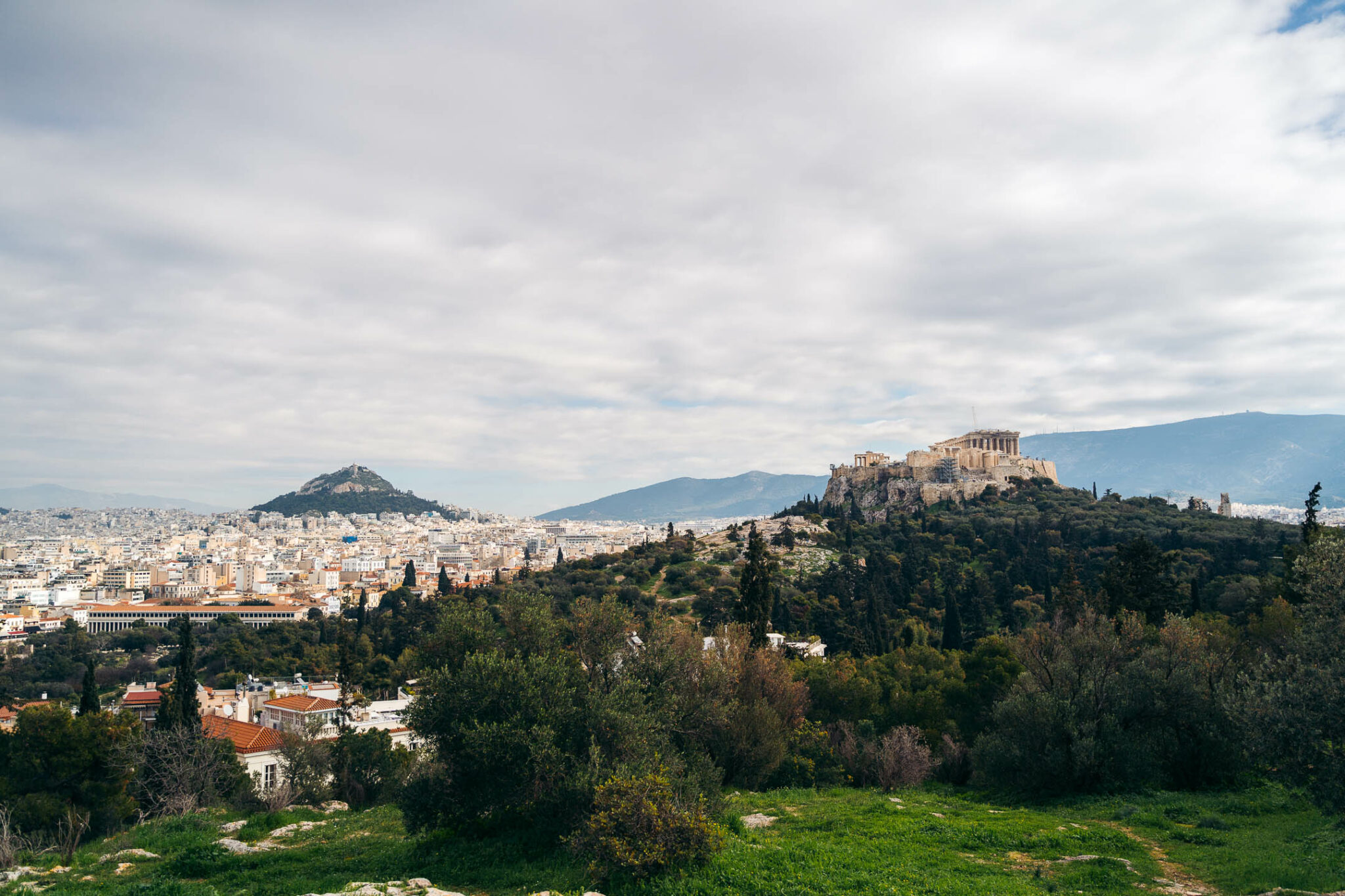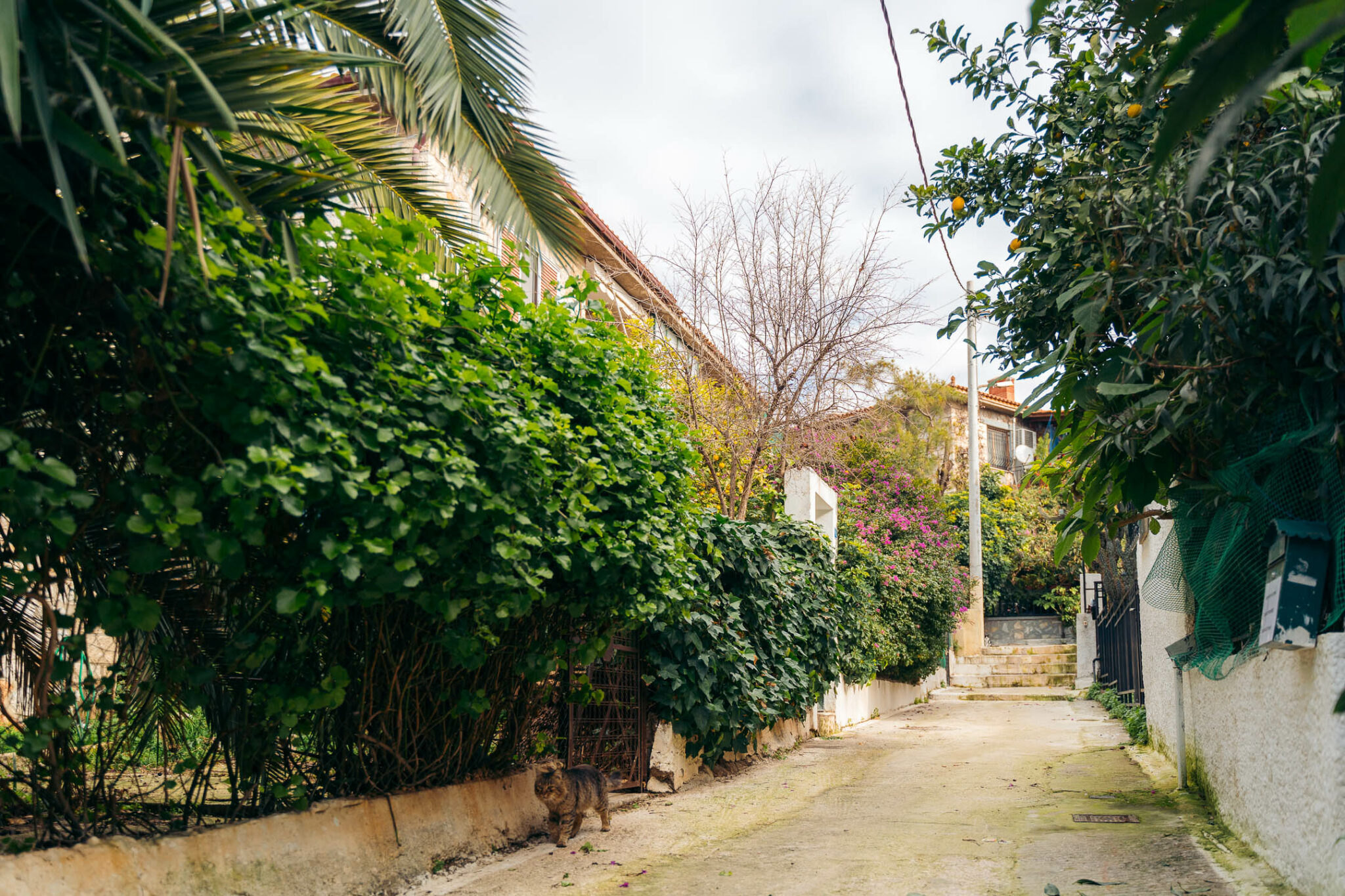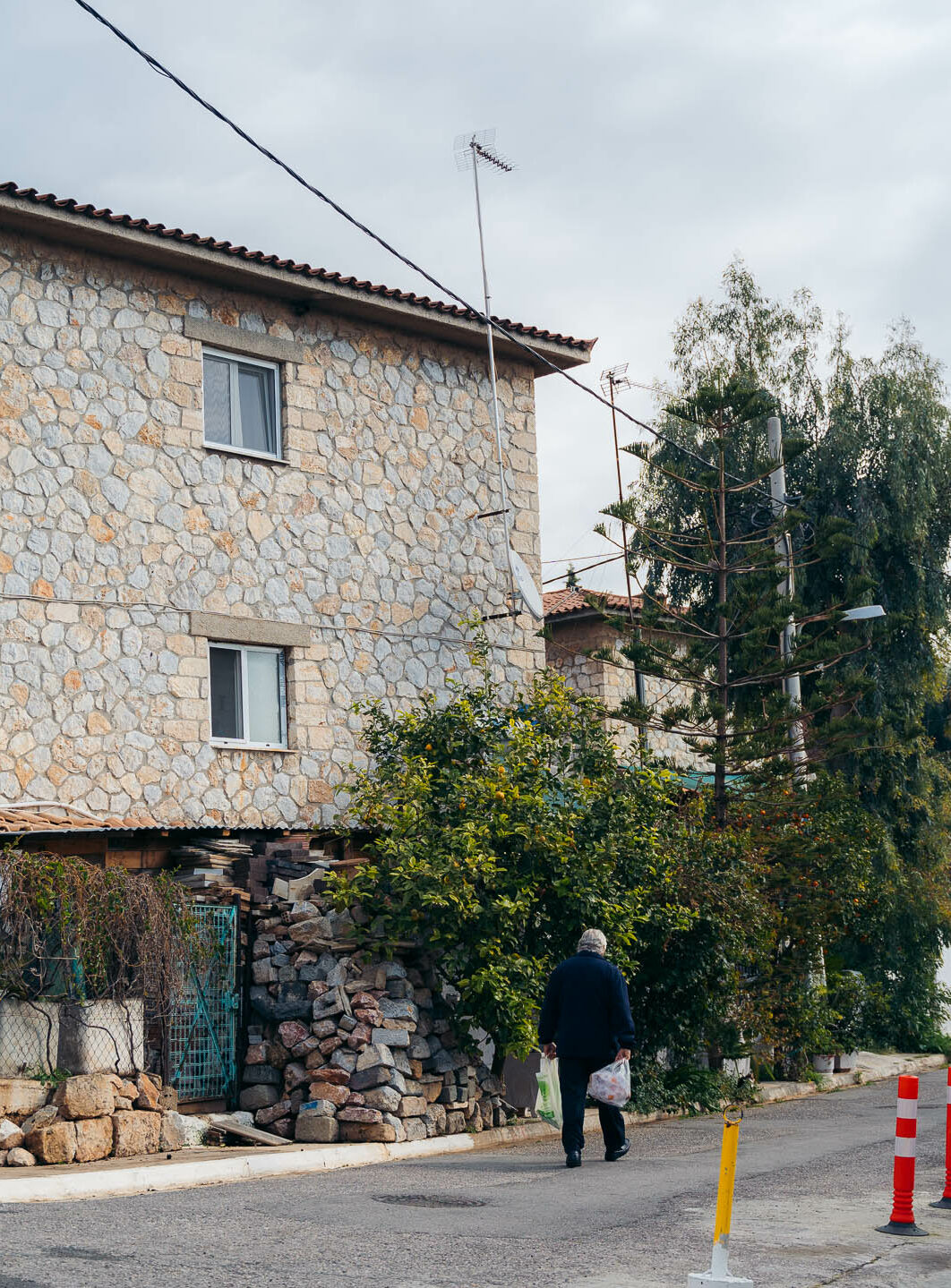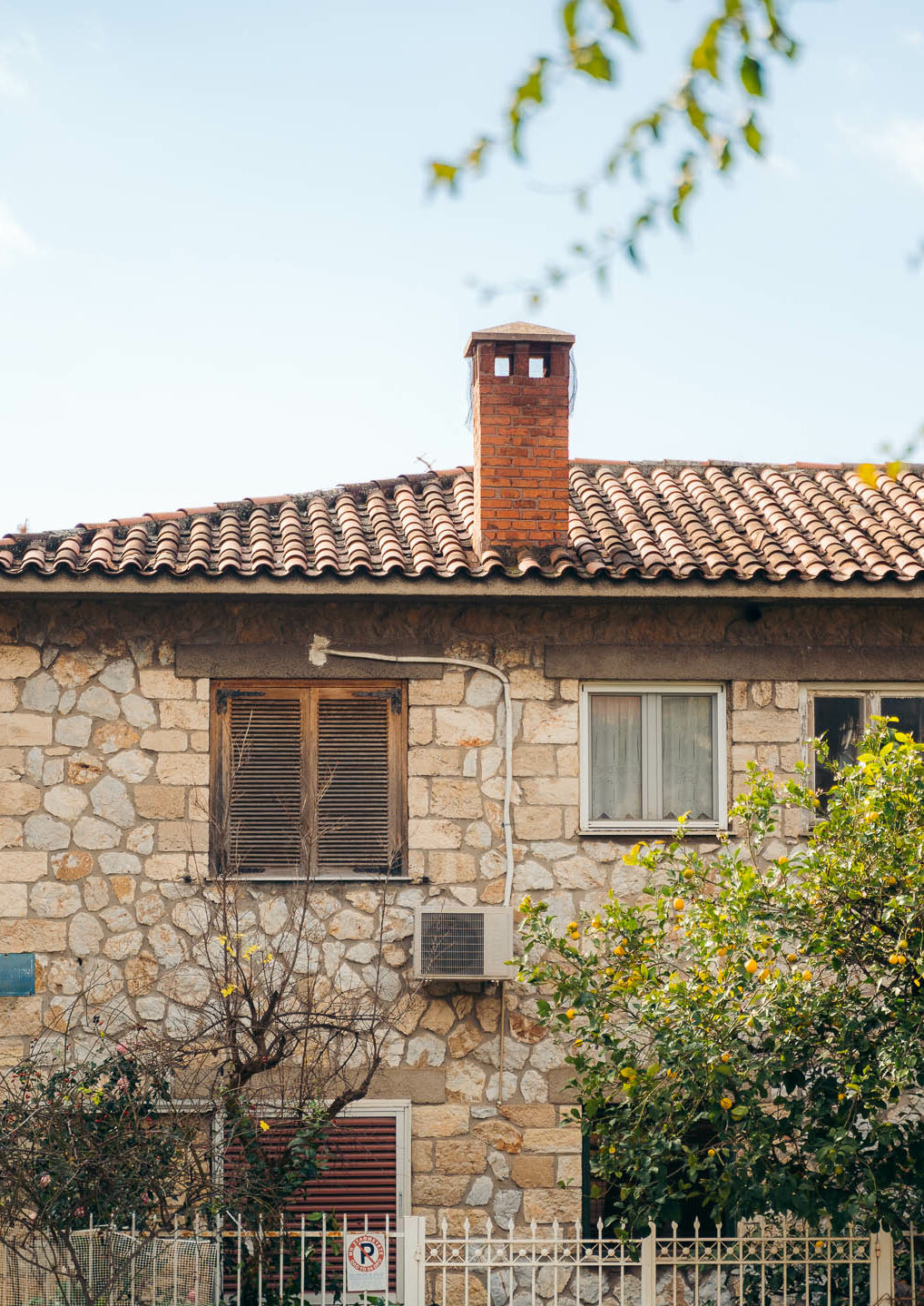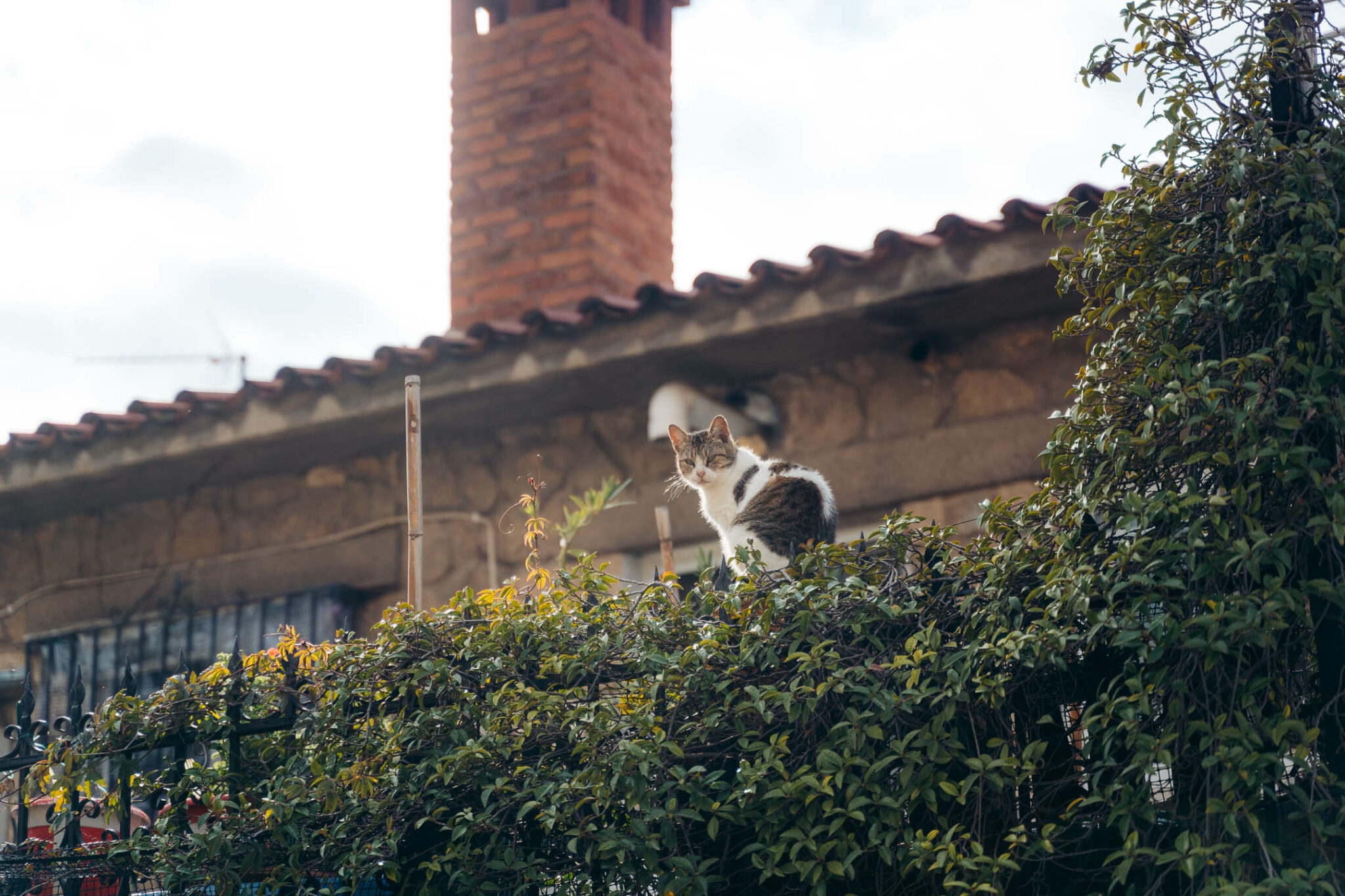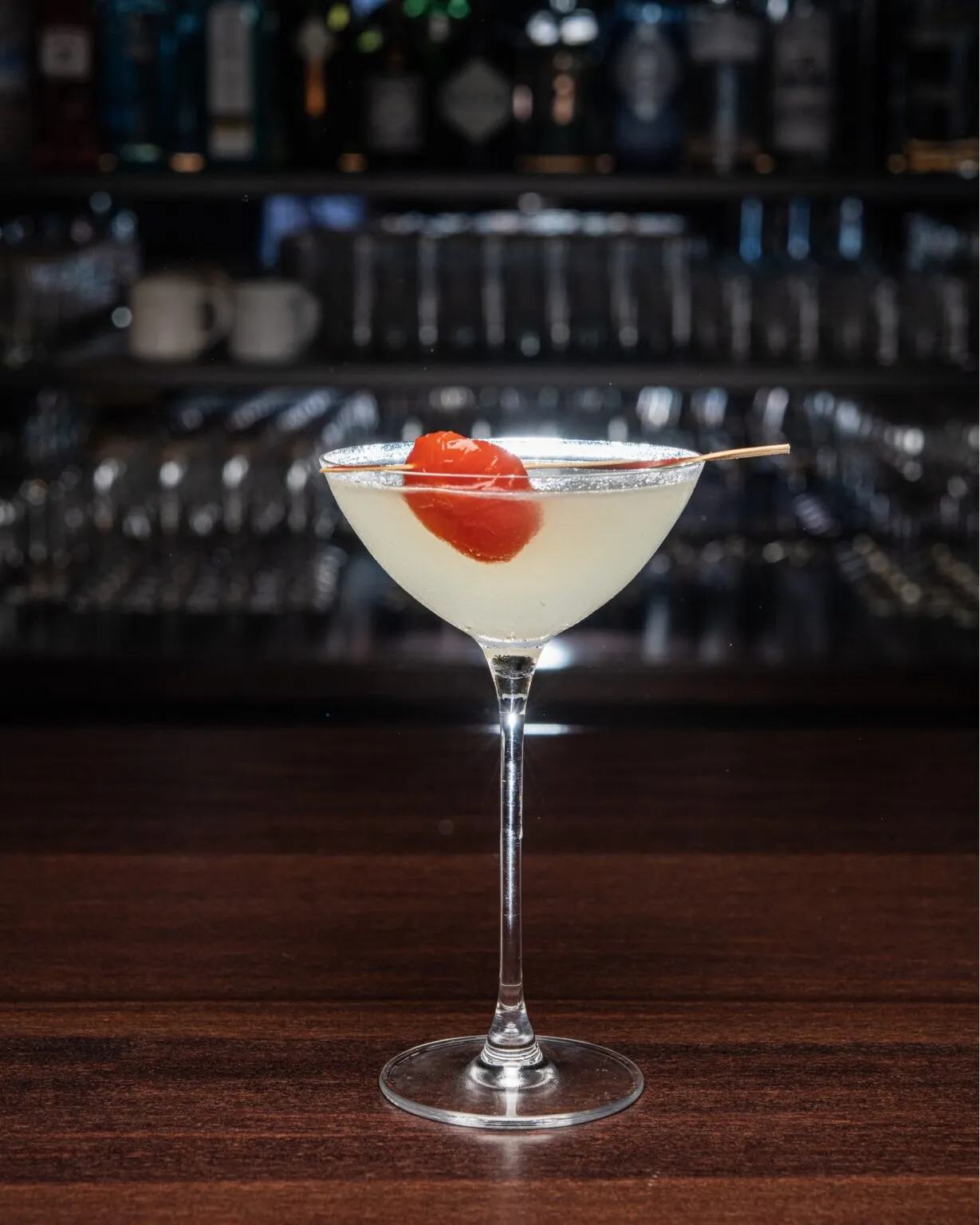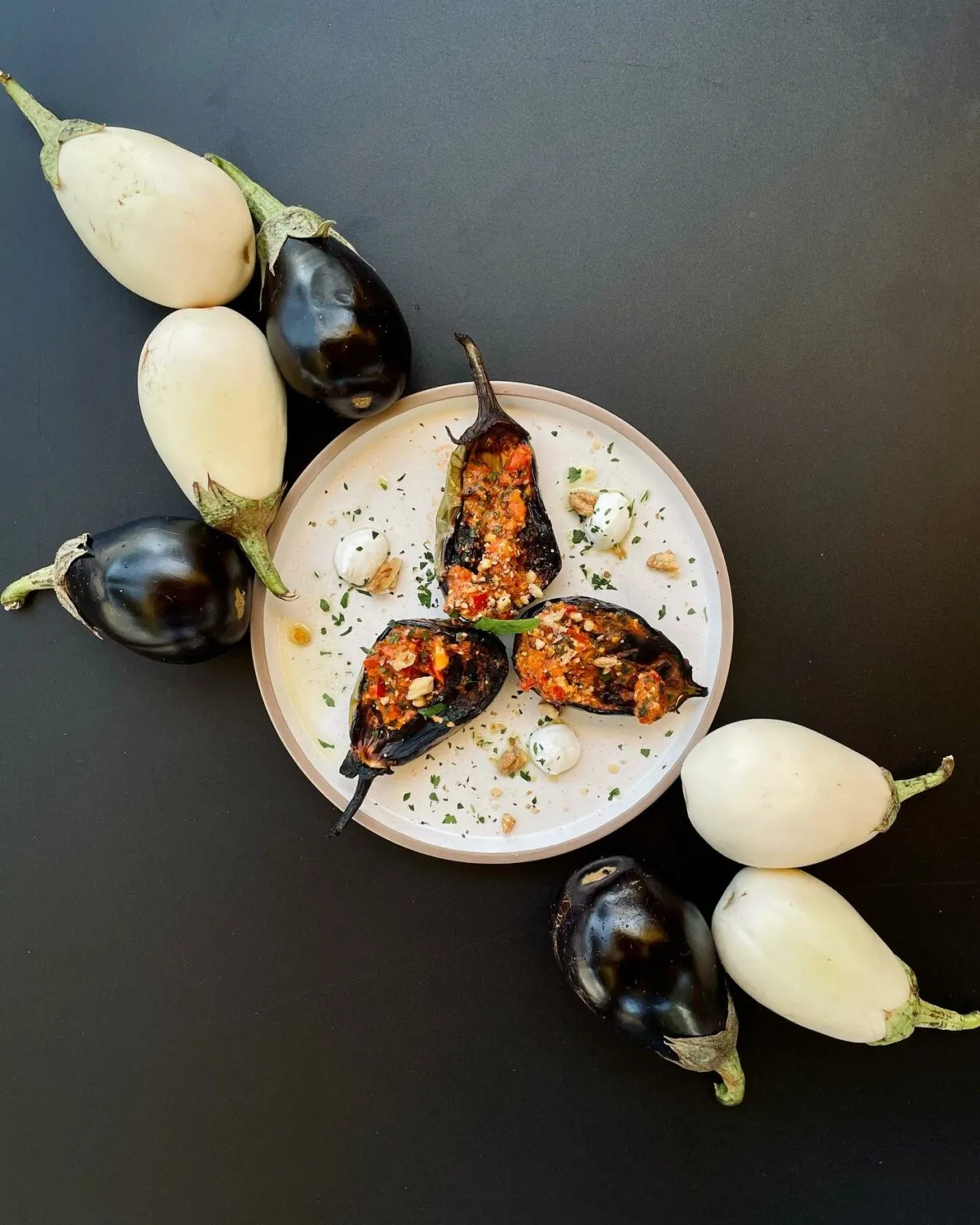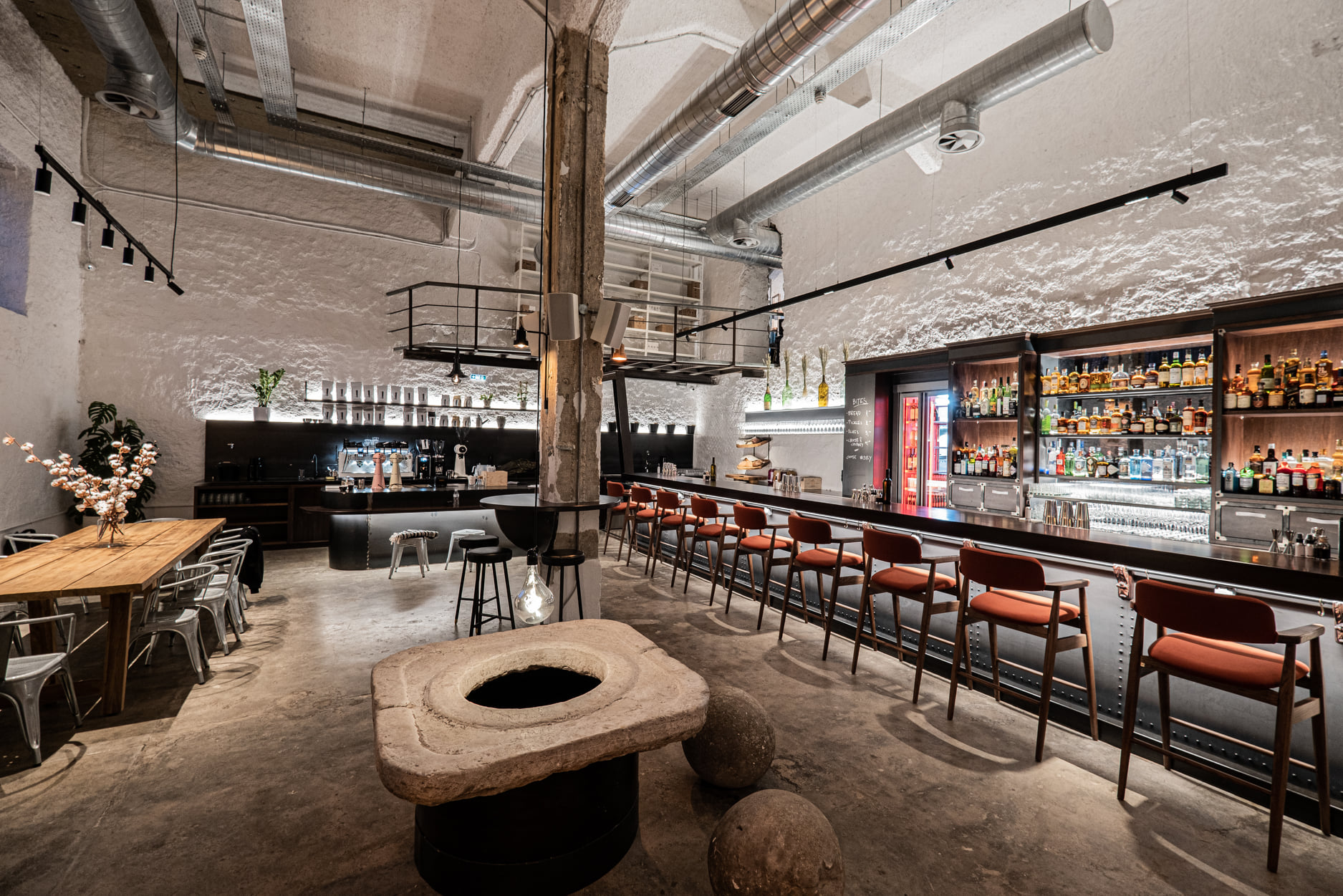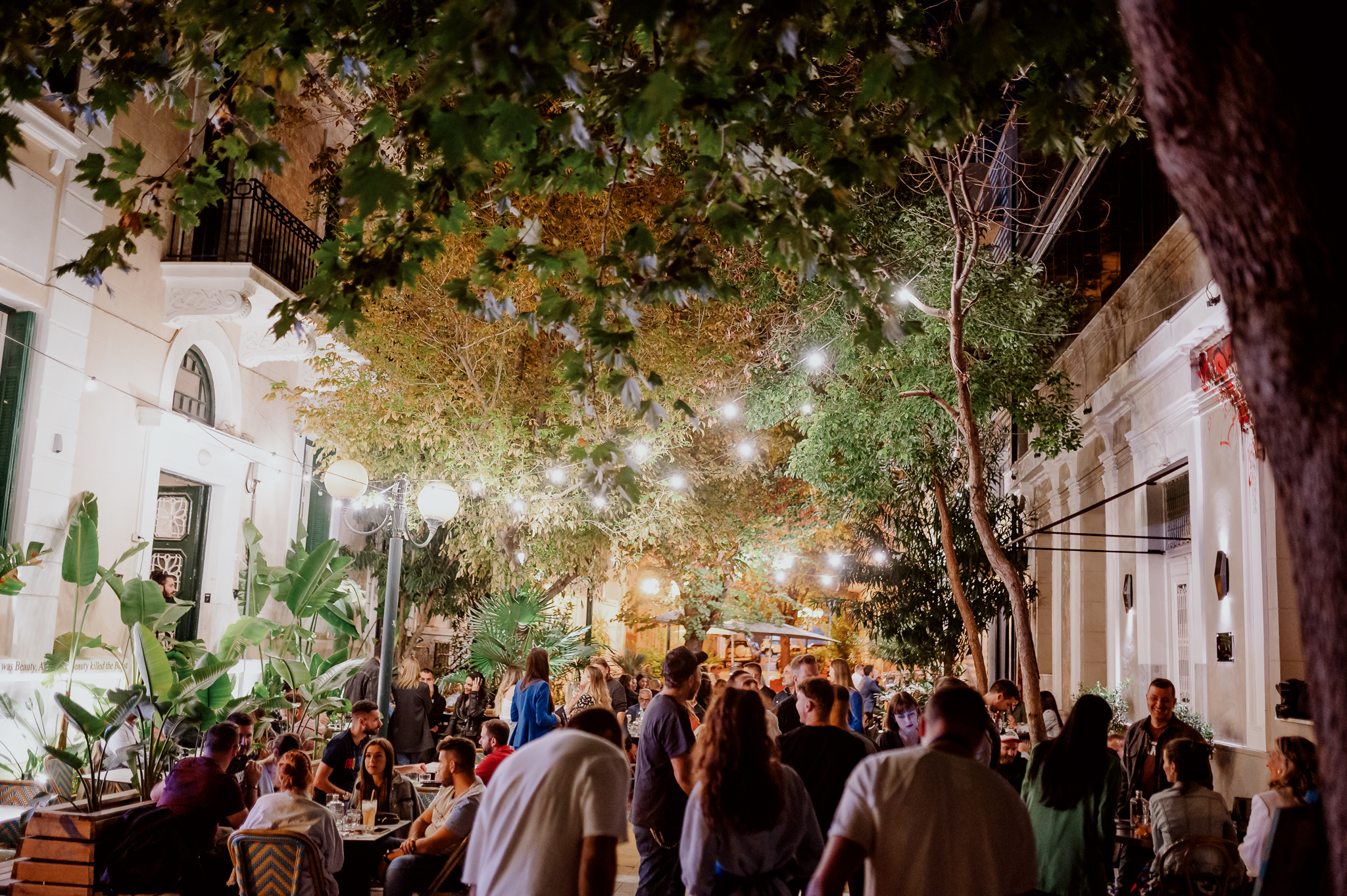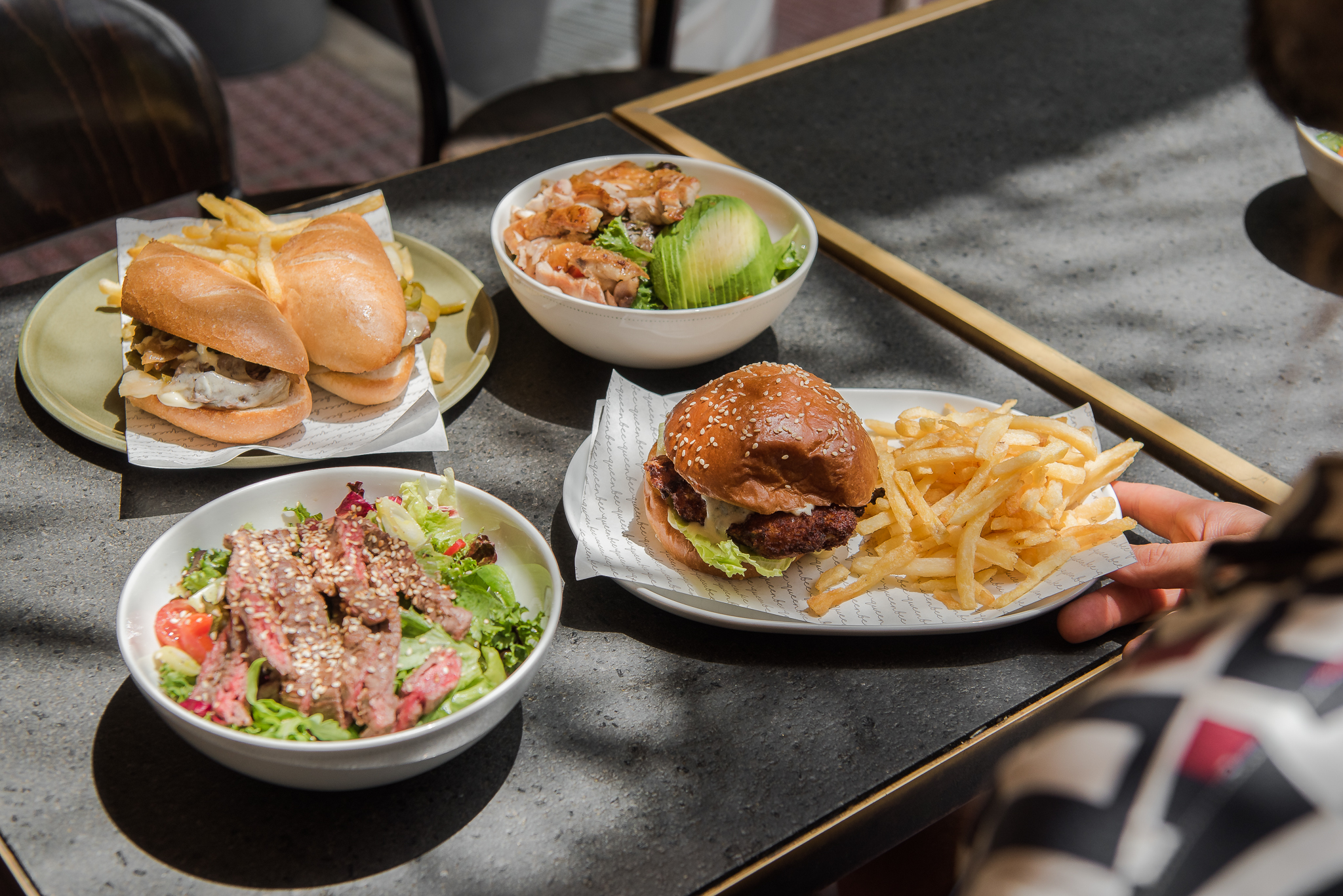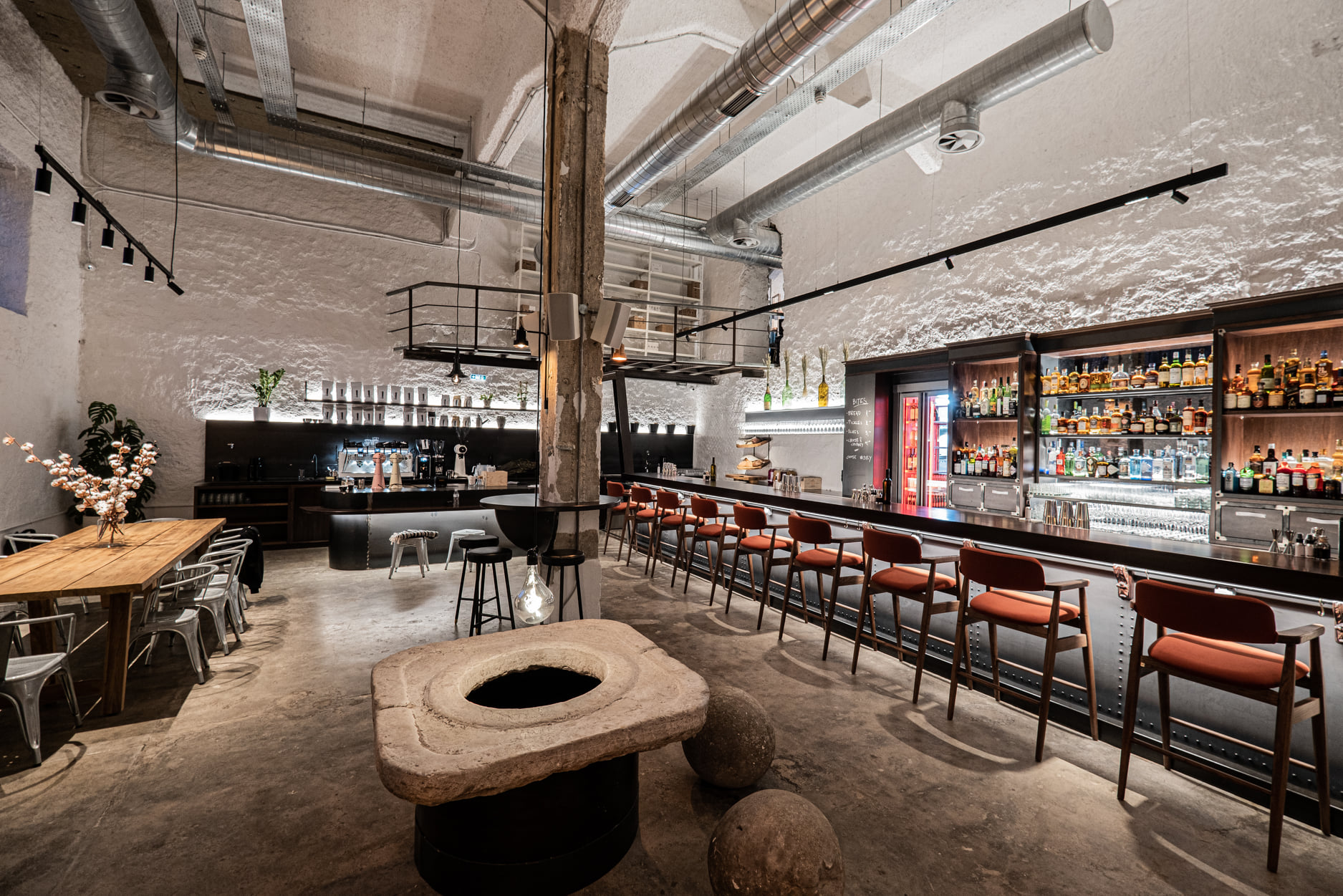Walking around Petralona, beyond the shops and cafes, you’ll discover an atmosphere that captures old Athens while having several contemporary charms. Its authenticity is part of a living, breathing reality, and its various features continuously remind one of the true essence of traditional culture. Petralona stretches out from Piraeus Street to Filopappou Hill, and from Hamosternas Street to the Poulopoulos Bridge in Thisseio. This part of the city, named for the large stone threshing floors once in the area, where locals threshed their grains, is bisected by the Metro line, dividing it into Upper and Lower areas.
Here, there’s a distinct philosophy of blending between the present and the past, which vividly brings William Faulkner’s words to mind when he wrote “The past is never dead. It’s not even past.”
Upper (Ano) Petralona
In Upper Petralona, start your exploration in Petriana, the stone-built district. Perched atop a hill, its narrow streets echo past decades, offering a tranquil walk among flowerpots and balconies, a stark contrast to the nearby bustling city center. This is the same neighborhood that was first settled in after the 1922 Asia Minor Catastrophe by refugees from Asia Minor, who built small houses. Over time, the old, poor neighborhood disappeared, and its streets filled with cafes and tavernas.
Today, the area is ideal for a stroll with family, friends or four-legged companions, or a bike ride among the scattered neoclassical buildings on streets like Dimofontos, Troon, Gennaiou Kolokotroni, Dryopon, Dorieon. Between Kallisthenous Street and Filopappou Hill, on the side of the Hill of the Nymphs, it’s also worth stopping at Attaliotika or Asyrmatos.
Petriana now occupies part of this area, and its once impoverished and degraded face was captured in the 1961 film “Synoikia to Oneiro” (with the English title ‘A Neighbourhood Named a Dream’) directed by Alekos Alexandrakis. The Asyrmatos area was named after the Greek Navy’s Wireless Telegraphists’ School located there, where communication with ships sailing in the Saronic Gulf was conducted via an antenna.
A key landmark in Upper Petralona is the Dexameni Hill, located at the intersection of Kilis and Kallirois streets, under which flows the underground Ilissos River. At the foot of this hill, the retro café-bar Epí tis Dexamenis serves cocktails, in an ambience that harmonises with the neighbourhood’s vibe. As you walk towards Kilis Street, with the sea in the distance, make a stop at the Cretan-friendly Radiourgies for raki, tsipouro, and meze. Further along, on Troon Street, you’ll find the historic Zephyros open air cinema, that operates during summer, dating back to 1938. One of the capital’s first cinemas, it began as a shadow theatre venue and evolved into a film projection hall.
On the same street, indulge in some of Athens’ most interesting restaurants. At Giovanni Scaratz’s Sole Giaguaro, you’ll find Italian dishes perfectly combined with Greek elements. At the taverna Aster, a favourite spot for locals and tourists alike, you’re in for a treat with their famously fluffy meatballs. Chez Lucien offers an exquisite taste of French cuisine. For fine dining enthusiasts, gourmet restaurant Herve presents creative dishes inspired by ethnic street food, Mediterranean ingredients and classic French techniques. Also on this road is the beloved wine restaurant Koperti, known for its wine selections and unique meze dishes.
Beyond the delicious cuisines, on the upper side of the neighborhood, the 77th Elementary School at the corner of Dimofontos and Hyperionos, closed since the 1999 earthquake, stands as a distinctive landmark. Also noteworthy is the workshop of Eleni Flevotomou (Xenarchou 3, Upper Petralona), where lovers of the folk art of Karagiozis or collectors can buy handcrafted figures made with artistry and passion.
Lower (Kato) Petralona
In the world of Lower Petralona, things are markedly different. In the area once known as Katsikadika, where shepherds once grazed their flocks, vibrant daily life compensates for the denser buildings and lesser greenery, compared to Upper Petralona. This facet of Petralona encapsulates the journey of post-war Athens, as it embarked on its path to modern urban life in the 1960s.
Here, the boundaries are set by working-class memories, specifically the two emblematic factories: the Poulopoulos Hat Factory and the Pavlidis Chocolate Factory. The former, once the largest of its kind in the Balkans, now houses the ‘Melina Mercouri’ Cultural Centre of the City of Athens. The latter, with its continuing commercial operation and accompanying wafts of chocolate in the street behind it, reflects the lives of the neighbourhood’s old residents.
The industrial history is also present on Alkminis Street, where the art space The Hub, located in the former KOPER pharmaceutical factory, epitomizes the transition from a purely industrial past to a diverse present. This transformation has seen a piece of manual history replaced by spaces for artistic activities, shops, bars, and tavernas.
Lower Petralona does not lack in culinary excitement, as you will discover with a first stop at Volta, where a sense of social warmth complements the good food. Just a minute away, you can try exquisite tsikoudia and select wines from Ioannina to Crete at Ambelofilosofies. Meanwhile, the non-profit café Pervolaki serves beers from small breweries around Greece and coffee from the Zapatista communities. Also, the snack bar Lola, with its mouth-watering sandwiches and slow-tempo jazz, is perfect for unwinding. A relatively new and fascinating addition is Upupa Epops, with its striking contrast of size and tranquility, impressive glass ceiling, and classic cocktails in their finest form.
A stroll for a drink in Petralona isn’t complete without visiting two of the area’s most hyped spots. The Line , recently awarded with a Michelin star, is the only place in Athens where you can try Whyin, wine made with fruit and the brainchild of its owners, who also run the multi-awarded The Clumsies cocktail bar. On the other hand, Sempreviva offers the warmth of the North, with homemade pies taking centre stage.
Finally, it would be a real sin to tour Petralona without a visit to the Alkmini theatre on the street of the same name, with its rich theatrical programme. Additionally, Morfes Ekfrasis is the ideal venue for theatrical activities catering to children.



